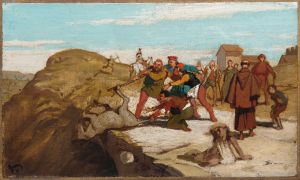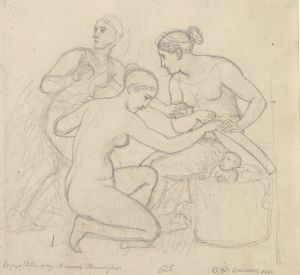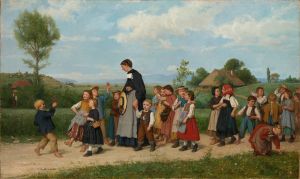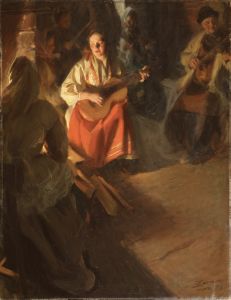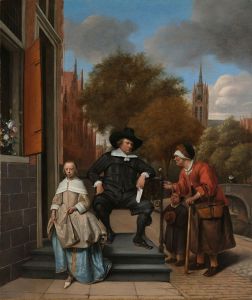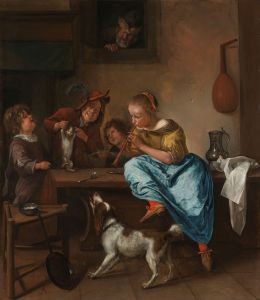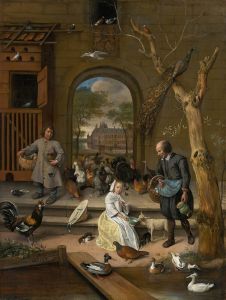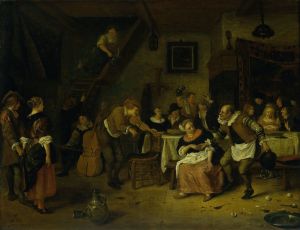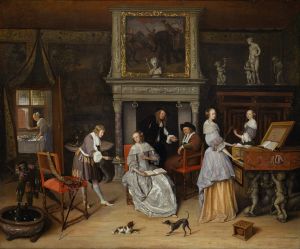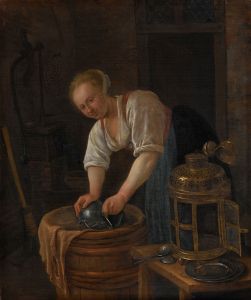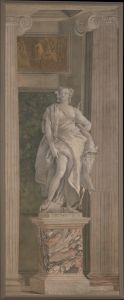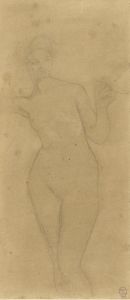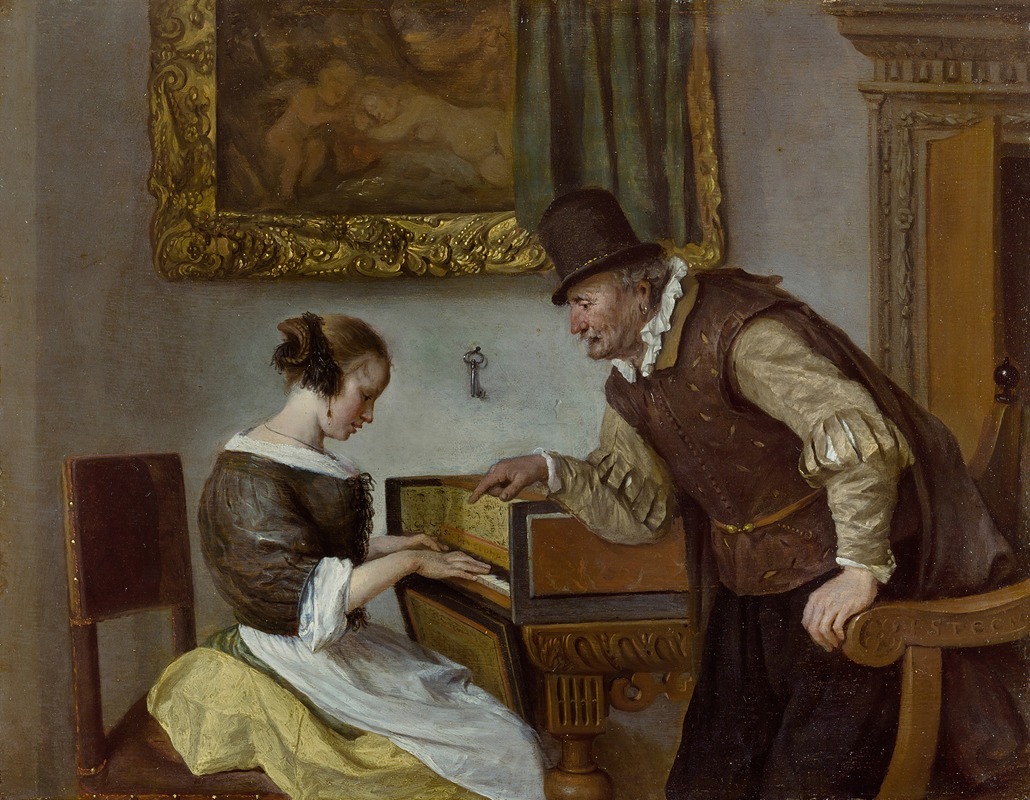
The Harpsichord Lesson
A hand-painted replica of Jan Steen’s masterpiece The Harpsichord Lesson, meticulously crafted by professional artists to capture the true essence of the original. Each piece is created with museum-quality canvas and rare mineral pigments, carefully painted by experienced artists with delicate brushstrokes and rich, layered colors to perfectly recreate the texture of the original artwork. Unlike machine-printed reproductions, this hand-painted version brings the painting to life, infused with the artist’s emotions and skill in every stroke. Whether for personal collection or home decoration, it instantly elevates the artistic atmosphere of any space.
Jan Steen's "The Harpsichord Lesson" is a notable work by the Dutch Golden Age painter, renowned for his lively and often humorous depictions of 17th-century Dutch life. Steen, who lived from 1626 to 1679, was a prolific artist whose works often contained moral lessons or commentary on human behavior, a characteristic feature of genre painting during this period.
"The Harpsichord Lesson" is an exemplary piece that showcases Steen's skill in capturing domestic scenes with a narrative quality. The painting typically features a young woman receiving a music lesson on a harpsichord, a popular keyboard instrument of the time. The setting is an interior space, often depicted with rich detail that reflects the affluence and cultural interests of the Dutch middle class during the 17th century.
Steen's work is known for its vibrant use of color and meticulous attention to detail, both of which are evident in "The Harpsichord Lesson." The composition often includes various objects that not only add to the realism of the scene but also serve as symbolic elements. These objects might include sheet music, musical instruments, and other items that reflect the theme of music and education.
The interaction between the figures in the painting is a focal point, with the teacher and student often portrayed in a manner that suggests a narrative beyond the mere act of a music lesson. Steen was adept at infusing his works with a sense of humor and irony, and "The Harpsichord Lesson" is no exception. The expressions and body language of the characters can imply a range of interpretations, from a straightforward educational exchange to a more nuanced social commentary.
Steen's paintings often contained moralistic themes, and "The Harpsichord Lesson" may subtly critique or reflect on societal norms and behaviors. Music lessons in the 17th century were not only a form of education but also a social activity, and Steen's depiction might explore themes of courtship, social status, or the pursuit of leisure.
The artist's ability to capture the essence of daily life with wit and insight has made his works enduringly popular. Steen's paintings, including "The Harpsichord Lesson," are celebrated for their dynamic compositions and the way they engage viewers in the unfolding story. His work provides a window into the cultural and social dynamics of his time, offering both entertainment and reflection.
"The Harpsichord Lesson" is housed in various collections, and like many of Steen's works, it continues to be studied and appreciated for its artistic merit and the light it sheds on the period in which it was created. Steen's legacy as a master of genre painting is firmly established, and his works remain a vital part of the study of Dutch art history.





